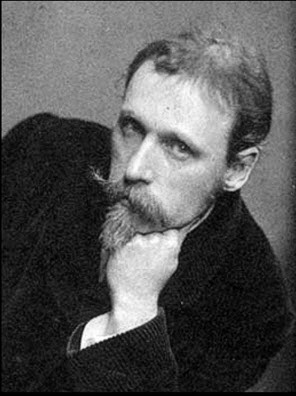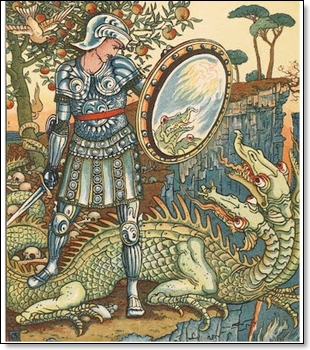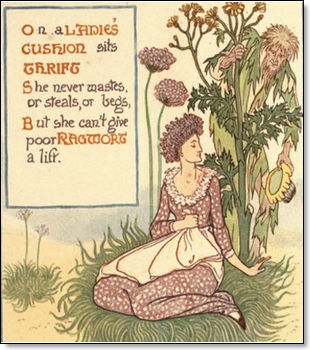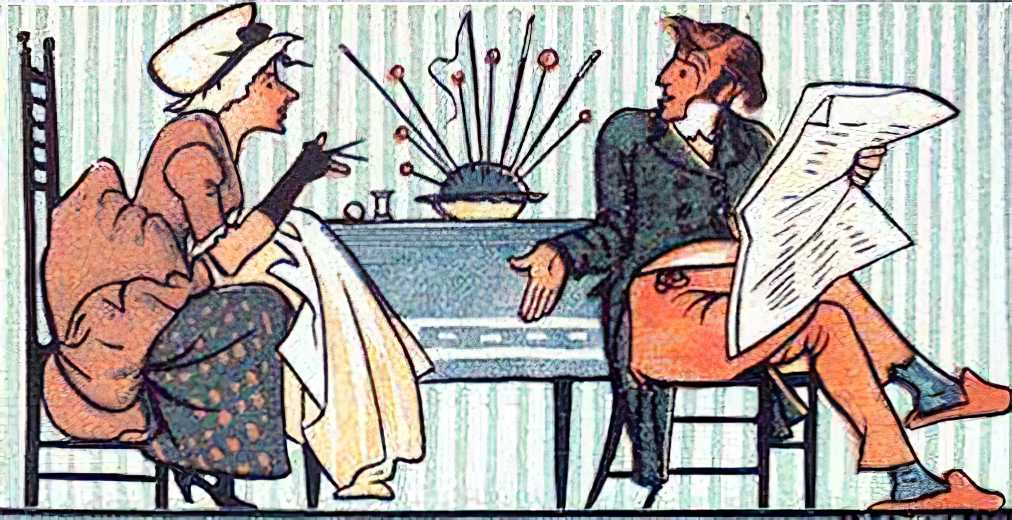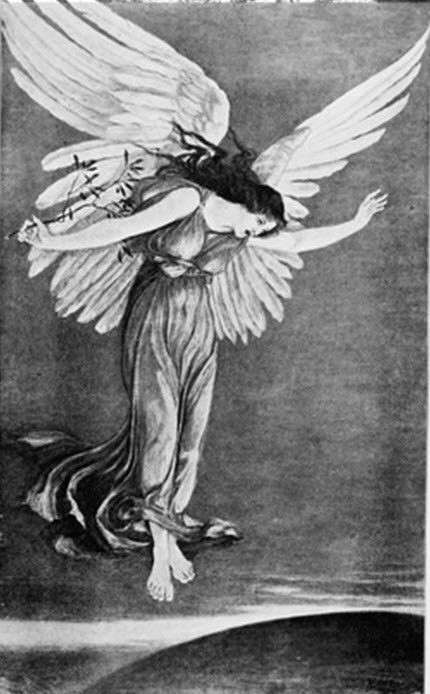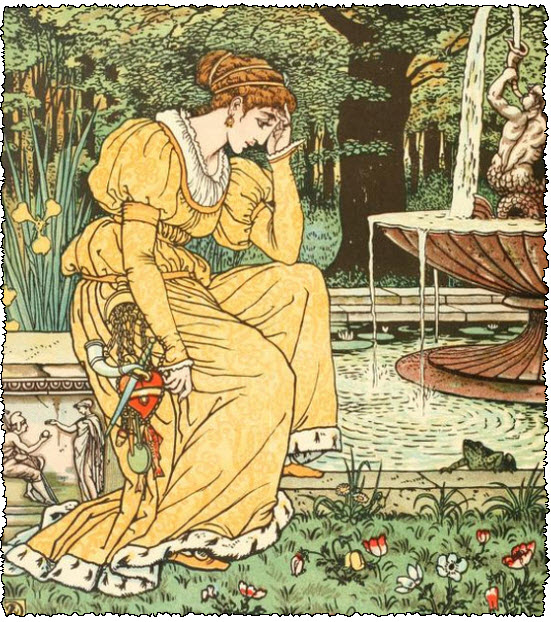
The Frog Prince is an adaptation of the classic fairy tale by the same name, with colour illustrations by Walter Crane. It was published in 1874 by George Routledge and Sons.
The Frog Prince is a traditional European fairy tale. There are many forms and variants, but the best known version is the one published by the Brothers Grimm. A beautiful but spoiled Princess meets a frog, and eventually discovers that he is actually a human prince who has been transformed into a frog by an enchantment. Once the spell is broken, the two live happily ever after.
In the older versions of the Frog Prince, the spell was broken when the princess threw the frog against the wall out of disgust, shattering the frog form and revealing his true nature. In some other traditional versions, the spell was broken by the frog sleeping on the pillow next to the princess, which seems to have some sexual innuendo. However in the modern forms of the fairy tale, the Frog Prince is released from the spell when the princess kisses him. This last version is the one most familiar today and is the version used as the basis for Walter Crane's illustrations in this book.
Psychiatrist Carl Jung believed that the Frog Prince is an allegory of a young woman's passage from youth into adulthood, and her corresponding change of perception of men: first she sees them as disgusting and foreign (the frog) then she yearns for them (the prince.)
In modern culture, the concept of the Frog Prince serves as a sort of moral lesson to look beyond appearances when choosing a mate.
